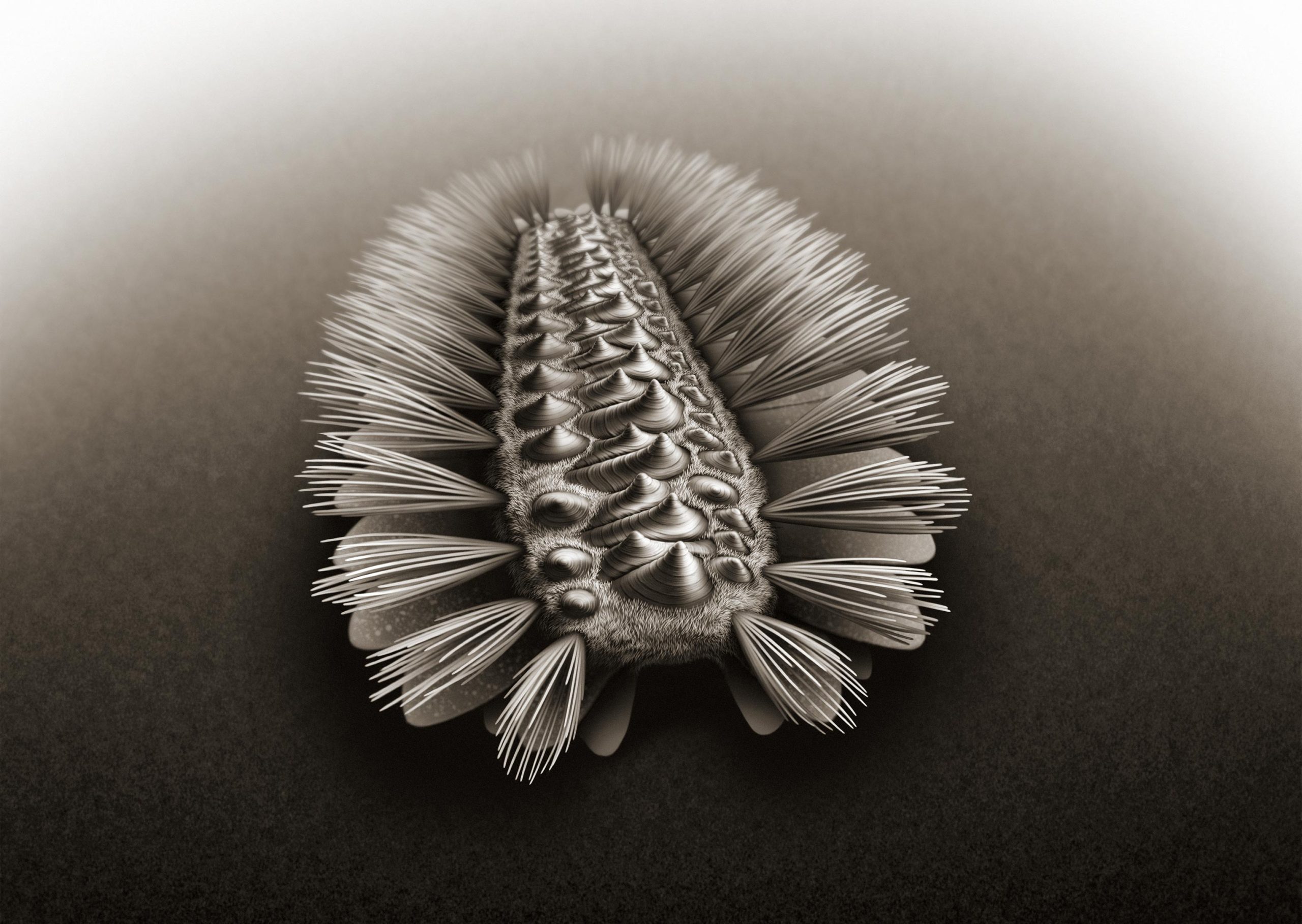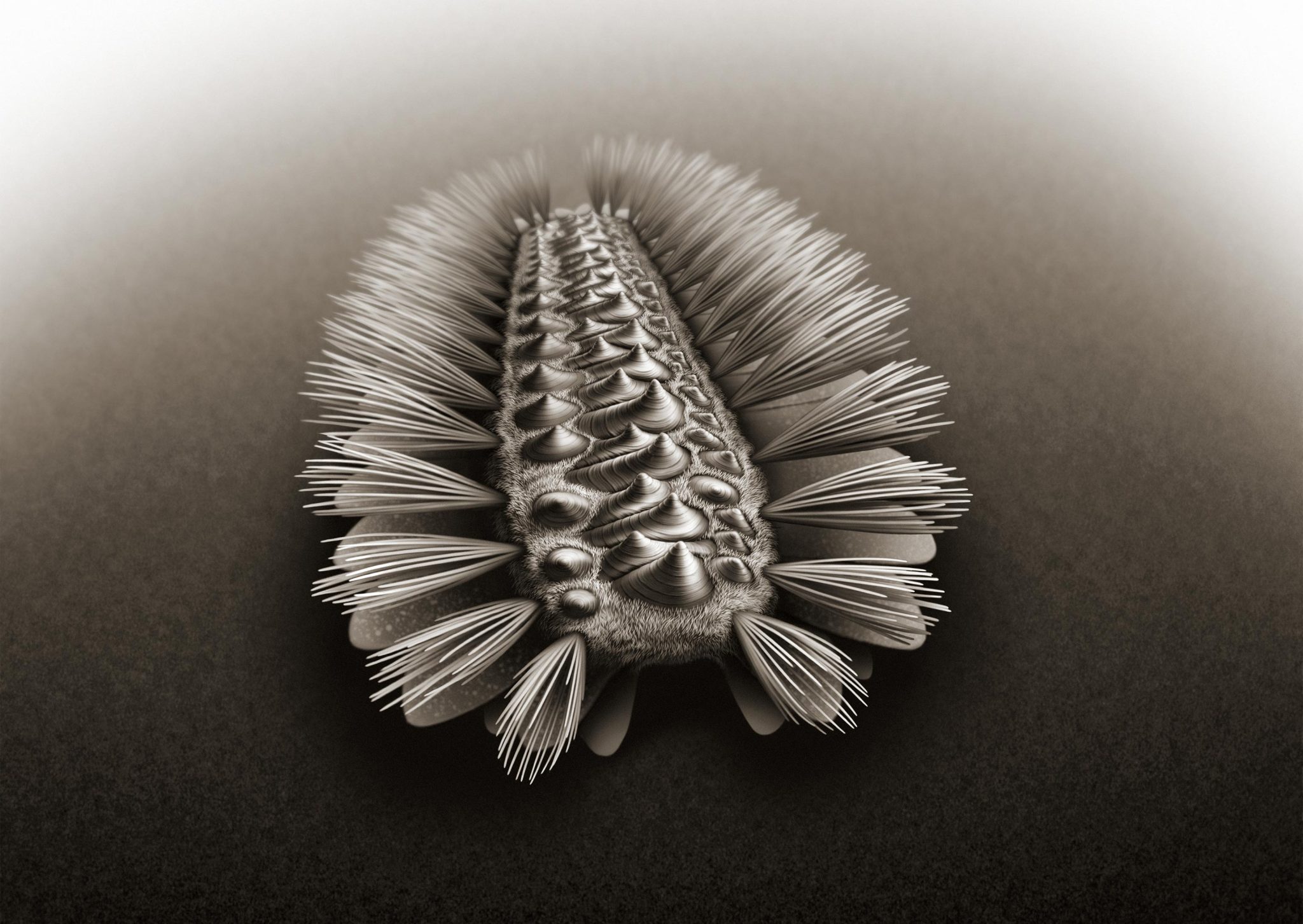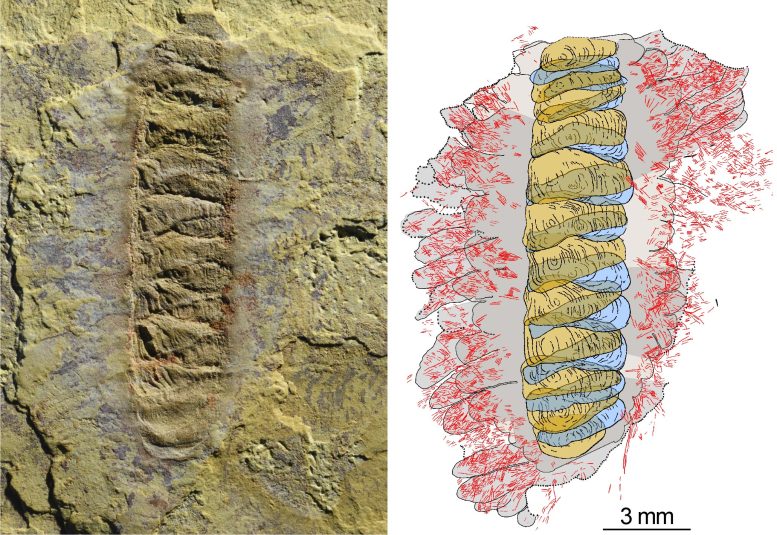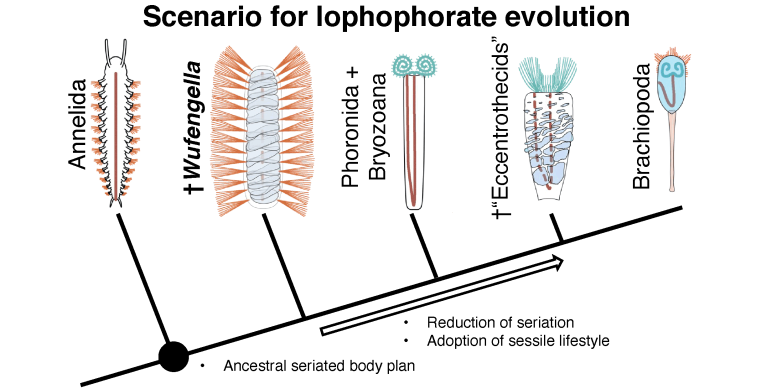
Daily News | Online News

A reconstruction of how Wufengella would have looked like in life. Credit: Illustration made by Roberts Nicholls, Paleocreations.com
A well-preserved fossilized worm dating from 518-million-years-ago resembles the ancestor of three major groups of living animals.
An international team of scientists has discovered that a well-preserved fossilized worm dating from 518-million-years-ago resembles the ancestor of three major groups of living animals. The research team included scientists from the University of Bristol, the University of Oxford, and the Natural History Museum.
Named Wufengella and unearthed in China, the fossil worm measures about half an inch long. It was a stubby creature covered in a dense, regularly overlapping array of plates on its back. It belongs to an extinct group of shelly organisms called tommotiids.
Surrounding the asymmetrical armor of the worm was a fleshy body with a series of flattened lobes projecting from the sides. In between the lobes and the armor, bundles of bristles emerged from the body. The many lobes, bundles of bristles, and the array of shells on the back are evidence that the worm was originally serialized or segmented, like an earthworm.
The findings were published in the journal Current Biology on September 27. Study co-author, Dr. Jakob Vinther from the
The fossil Wufengella and a drawing outlining the major components of the organism. Credit: Jakob Vinther and Luke Parry
The animal kingdom consists of more than 30 major body plans categorized as phyla. Each phylum contains a unique set of features that set them apart from one another. Only a few features are shared across more than one group, which is a testament to the very fast rate of evolution during which these major groups of animals originated. This was during a period called the Cambrian Explosion, approximately 550 million years ago.
Brachiopods are a phylum that superficially resembles bivalves (such as clams) in that they have a pair of shells and live attached to the seafloor, rocks, or reefs. However, when looking inside, brachiopods reveal themselves to be significantly different in many respects. In fact, brachiopods filter water using a pair of tentacles folded up into a horseshoe-shaped organ.
Such an organ is called a lophophore and brachiopods share the it with two other major groups called the phoronids (“horseshoe worms”) and bryozoans (“moss animals”). Molecular studies – which reconstruct evolutionary trees using amino
A schematic outline of how tommotiids tell us about the evolution of body plans across the tree of Life. Credit: Luke Parry



0 Comments :
Post a Comment